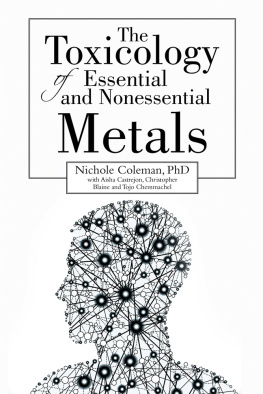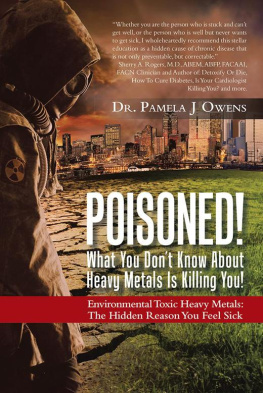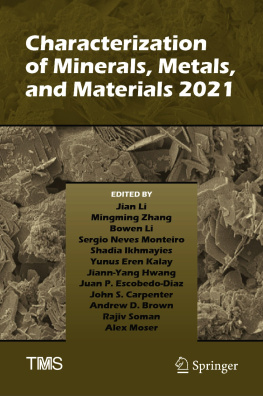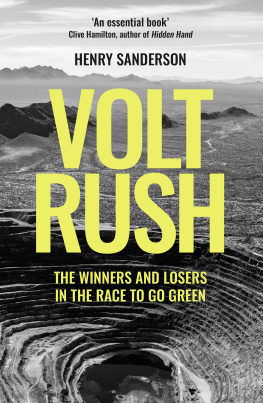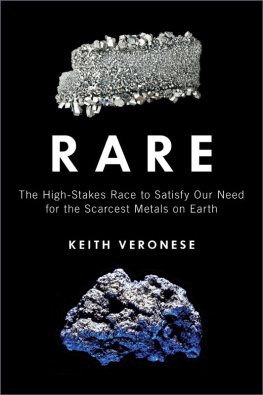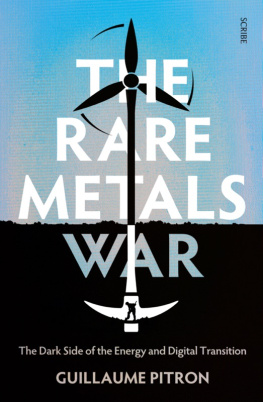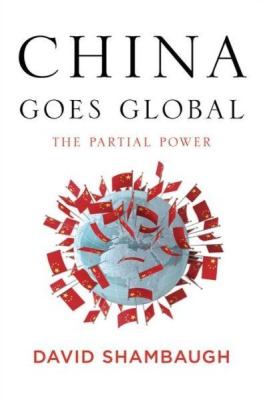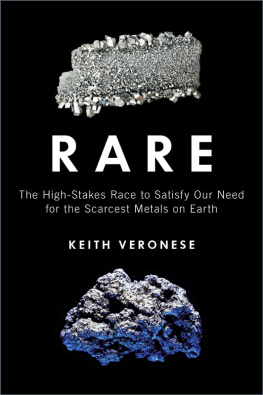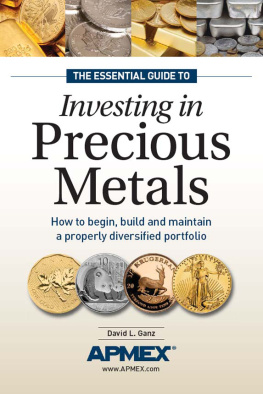The Elements of Power
The Elements of Power
Gadgets, Guns, and the Struggle for a Sustainable Future in the Rare Metal Age
DAVID S. ABRAHAM

Published with assistance from the foundation established in memory of Philip Hamilton McMillan of the Class of 1894, Yale College.
Copyright 2015 by David S. Abraham.
All rights reserved.
This book may not be reproduced, in whole or in part, including illustrations, in any form (beyond that copying permitted by Sections 107 and 108 of the U.S. Copyright Law and except by reviewers for the public press), without written permission from the publishers.
Yale University Press books may be purchased in quantity for educational, business, or promotional use. For information, please e-mail (U.K. office).
Set in Minion type by Westchester Publishing Services.
Printed in the United States of America.
Library of Congress Control Number: 2015942454
ISBN 978-0-300-19679-5 (cloth : alk. paper)
A catalogue record for this book is available from the British Library.
This paper meets the requirements of ANSI/NISO Z39.48-1992 (Permanence of Paper).
10 9 8 7 6 5 4 3 2 1
To my father, who never read even page 1 but who was
with me along the way, and to my mother, who read every
page again and again, and then again.
Contents
Preface
We have quietly entered a new era, the Rare Metal Age. The products we use every day, from smartphones to cars, require a great number of hard-to-come-by metals, combined in increasingly complicated amalgamations. This book shows where the ingredients that underpin our society come from, how they get to us, and how they impact the environment. I wrote this book in the hope that you, the reader, will consider the scope of our dependence on these metals and will recognize that our technology, as well as our economic and climate security, comes at a cost. How we plan to pay will affect our future in ways many of us have not previously understood.
To develop this understanding, Ive tracked the trail of these rare metals from mine to gadget and from gadget to recycled afterlife. I chatted with Japanese salarymen in smoke-filled, back-alley restaurants in Tokyo; feasted on lamb and beer with Chinese officials in Mongolian-style yurts; waded in the muck with miners off the coast of Sumatra, Indonesia; and visited factories in a formerly secret Soviet town that once refined uranium for nuclear weapons. Yet, although I traveled to some of the most rugged spots on the planet, my formal research started at a far more genteel place: Japans Ministry of Economy, Trade and Industry in 2010.
At the time, I was a foreign researcher with the Council on Foreign Relations working from an internal cubicle on the ministrys eleventh floor. While my perch lacked a view, I had a ringside seat to one of the greatest Asian resource battles of the past generation. China cut off exports to Japan of a set of rare metals, called rare earth elements, during a territorial skirmish in the East China Sea. As I witnessed Japans rapid capitulation to many of Chinas demands, I saw a new geopolitical trump card. The battle over resources, which started when the first person learned how to coax metal from stone, had expanded into a larger battlea war over the periodic table.
My interest in rare metals was initially geopolitical. I spent years examining the nexus of natural resources and geopolitics at an energy trading company, a Wall Street firm, and the natural resource division of the White House Office of Management and Budget. I also managed a nonprofit focused on water in Africa. But I looked at commodities consumed in large quantities, and I learned that the small rare metal world is far more complex and removed from the scrutiny of commodities like oil, gas, and coal.
Through my research in a dozen countries and my meetings with hundreds of miners, traders, scientists, and policymakers, I soon realized that geopolitical tensions were only one of the impediments to meeting a countrys resource needs. Our rare metal supply lineswhich ensure that the right metal of the right grade reaches the right location at the right time and at the right pricehave become a marvel of modern efficiency. But these supply lines are precarious, and our increasing global demands will soon stress them further. Our high-tech, green society is built on a wobbly foundation.
Many have written about the economic and social effects of our international supply lines. Articles on abuse and mistreatment of workers in sweatshops and factories now abound in the press. Business journals examine which countries profit from the globalized supply chain of our electronic gadgets. Even coverage of the worlds electronic waste, burned in Africa and Asia, has now entered the global discussion.
This book builds on those reports by examining the supply chain of the hidden rare metals that make modern life possible. These metals permeate our lives, allowing buildings to soar and our televisions to show vibrant colors. And because these metals are critical in green technology as well, they are the seeds of our sustainable futures, but, as a society, we know very little about them. They are buried deeply in our products and are indistinguishable to us from more well-known metals like aluminum and iron. Every age has its resources: iron provided weapons; coal, oil, and natural gas give light and power. Now ingredients like rare earth elements, indium and tungsten are critical in ways many of us have failed to grasp. Indeed, these rare metals may well be one of the most underreported areas of research today, despite, as we will see, the increasingly economic and geopolitical advantage they confer.
Its not just the metals themselves that remain mired in obscurity and secrecy; companies that use these materials often conceal their use, behind the veil of patents and trade secrets. Even those working in senior positions in many high-tech firms are not aware of the materials on which their operations are built.
Although I found unsavory aspects of the industryillegal trade, unscrupulous mining, and environmentally noxious metal processingmost people in the business are decent. They are striving to make a comfortable life for themselves and their families. But, compared to other industries with which Im familiar, the rare metal world has an air of secrecy, leading to a low level of trust. While the mining and trading of these metals is not a lawless realm, one would do well in this arena to abide by the Russian axiom, trust, but verify.
For this reason, one of the greatest challenges to writing this book was the lack of reliable statistics. Verifiable facts are hard to come by and often turn out not to be facts after all, but someones guess that was repeated enough times to etch itself into the industry as truth. Information reported in popular media can be far from accurate. Statistics on market size vary wildly between industry sources. Even government trade figures fall short; for example, Chinas rare earth exports to Japan and Japans rare earth import statistics rarely align. In this situation, the absence of statistics can be as telling as the statistics themselves. Interviews with knowledgeable sources and time spent at mining sites globally were invaluable to fill in gaps in my knowledge, but they inherently carry the risk of my seeing only a certain perspective.
In my quest to get to the inner circle of truth, I have done my best to be true to the sentiment Ive heard in the market and have attempted to filter the information through an unbiased lens. Figures, though, may be more estimates than actuals. And verifying black market data and activities relies heavily on the participants themselves and so data can be biased. The assumptions I make are my own. I have tried to make things simple, for example, by standardizing terms when possible; I have used metric tonnes for the weight measurement, but employed the U.S. spelling of the word tons. I also tried to use measurements standard for the context; metals are sold by the ounce, flask, pound, and kilogram. Statistics in the book are as current as what was available at the time of writing, but since the industry publishes statistics infrequently, they may be less current than desirable.
Next page

